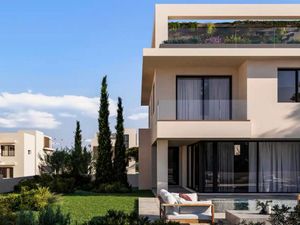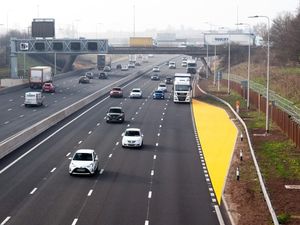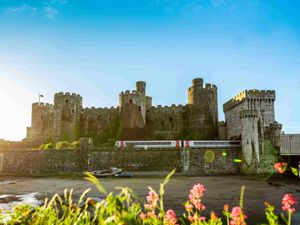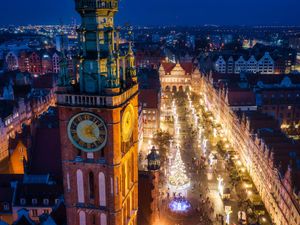Travel review: Aalborg for a Danish delight
Just outside the centre of Aalborg, a stone’s throw away from the imposing Hotel Comwell Hvide Hus, there’s a park where you can listen to the music of Sir Cliff Richard, Status Quo, Guns n’ Roses and Shakira, while standing next to oak and cherry trees planted by the artists themselves.
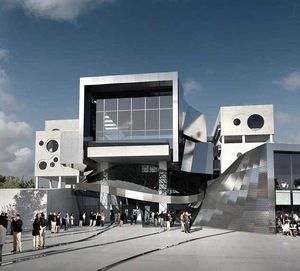
There are dozens of them. All you do is push a button at the base of the tree and the music plays. And if the pop and rock doesn’t float your boat, you can listen to John Cleese tell jokes or Andrea Bocelli croon.
In many ways the Park of Music in Kildeparken, is the perfect introduction to North Jutland, a region covering Denmark’s northern tip around 200 miles from Copenhagen.
It’s a place where everything is not always as it seems; where cities give way to vast expanses of countryside in the blink of an eye; where you can taste some of the best food in Scandinavia, and where depending on what time of year you go, it is entirely possible that you will experience all four seasons in one day.
Entering Aalborg from the north involves crossing the Limfjord – the body of water that slices through Jutland – and passing by the giant cement factories that define the city’s fading industrial past.
The shipyards are gone, and modern Aalborg – unflatteringly known as ‘the Birmingham of Denmark’ in the 1980s – has reinvented itself as a sophisticated, vibrant city.
Its impressive revamped waterfront is a striking a symbol of its new identity.
The stretch along the harbour features the stunning Utzon Centre, an architecture and design hub created by famous Danish architect Jørn Utzon (the man behind the Sydney Opera House); and the House of Music, an incredible live venue that features a 1,300 capacity opera house and somehow manages to make plain grey concrete look beautiful.
There are also some of the priciest homes in the area and an impressive new university campus, a reflection of how students are a vital part of modern day Aalborg.
Around 40,000 of them flock to the city – Europe’s happiest according to the European Commission – to attend its three universities, giving the place a lively beat.
My tour guide Mike Pierce, as ex-pat Englishman who fell in love with the city during a stint teaching here in the 1990s, explains: “When the industry started to disappear, rather than fade away Aalborg grew into something new, looking to designs, tourism and green technologies. The waterfront is a great example. Millionaires live next to students, so it’s not just the rich that get all the best spots.”
The city centre is something of a homage to the eccentric characters that have made Aalborg their home over the years.
Wander through its tight streets and into the main square and you are greeted by the imposing five-storey home of Jens Bang, the rude, aggressive and stinking rich merchant who made a habit of offending people.
Also worth a look is the Monastery of the Holy Ghost – which has also served as a hospital, a grammar school and hid a resistance cell during the Second World War; the bright yellow 18th century town hall, and Christian IV’s guild – a unique assembly named after Denmark’s most popular King which counts Ronald Reagan and Richard Chamberlain among its famous members.
The sloping Jomfru Ane Gade is the place to go for refreshments: the longest street in Denmark to consist entirely of bars.
While Aalborg is a delight, there are more treasures of a different variety to be found elsewhere in North Jutland.
Leaving the city by car, you hit countryside within a few miles.
We took the coastal route and headed north, stopping off at ancient Viking burial ground Lindholm Høje, and Hirtshals bunker museum, home of a preserved German Second World War defence installation.
The lighthouse at Rubjerg Knude is not to be missed. It sits on the very edge of a sand cliff at the end of a mile-long trail and is expected to topple into the sea in a couple of years.
When we set out is was bitterly cold and pouring with rain, halfway there we had blazing sunshine and finally, our arrival at the lighthouse was greeted with a rainbow in the middle of a sandstorm.
The final stop on our journey took us to Skagen, a charming port and fishing town on the very northern tip of Denmark.
Once a desolate outpost known for its wild seas and shipwrecks, it rose to prominence in the 1870s when the colony of artists that would become known as the Skagen painters began to move there.
Led by Michael Ancher and his wife, Skagen native Anna, the group included artist PS Kroyer and writer Holger Drachmann, who descended on the town every summer, attracted by the scenery, the fisherman and the incredible ‘blue’ light that enchanted many a visitor.
Modern day Skagen is packed with tourists in the summer, quadrupling its 10,000 population, but once the crowds have ebbed away by early September you could almost be transported back a century in time.
It’s nice enough whiling away the hours strolling through the streets lined with colourful houses (Skagen yellow is ‘a thing’ in Denmark, apparently), visiting the sand covered church or meandering around the beautiful harbour, or immersing yourself in the town’s artistic history in the Skagen Museum and Anchers Hus. But head out of town to Denmark’s most northern tip of Grenen for a unique experience.
After battling across windswept bogs you reach a point where two oceans meet in a swirl of violent currents. And there, with one foot in the blackened Baltic and the other in the deep blue North Sea, it is as if time stands still.
l Getting there: Ryanair offers direct flights from Stansted to Aalborg from £16.99 each way.
l Where to stay: Hotel Comwell Hus, Aalborg. Double rooms cost £154 inc. breakfast. Hotel Skagen offers double rooms from £130 inc. breakfast.
l What to do: Visit the Utzon Centre (£7 entry); hike to Rubjerg Knude lighthouse; check out the paintings at Skagen Museum (£13 entry); Walk to Grenen, where two seas meet.


